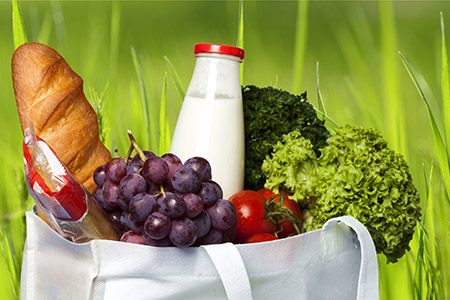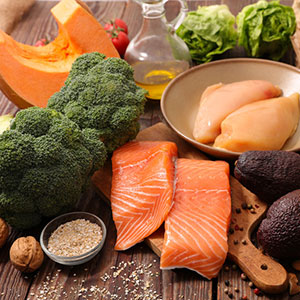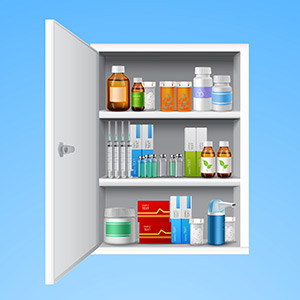We all need to eat and there is a more healthful and less expensive option that going out to eat or ordering food in. Its called buying groceries, then preparing and eating them. Its so easy today, you can even do it online and have them delivered to your home if you want. For the sake of this post, I will address how to go about doing this the regular way of going to a grocery store to purchase groceries.
Planning to Buy Groceries
Plan what you want to buy
As in all things at My Own Maintenance, I suggest a little bit of planning. I have already written about the advantages of keeping a list, so this is where you start. Before you leave the house, spend a minute or two thinking if there was anything you forgot to put on the list.
- Do you have enough of all the things you use regularly (this will be different for everyone, but might include eggs, milk, bread, meat, veggies, etc.)?
- Is anything on sale that you use all the time and can stock up on (this is for people who read ads)?
Do you really need to make this trip? Most people don’t need to shop more than once a week, so keep that in mind when planning.
Be sure to take your reusable shopping bags. If you don’t have any, you can purchase them at most grocery stores.
Plan where you will shop
Hopefully most or all of the items on your list can be purchased at one store. If not, determine if you CAN get them all at the same place. Sometimes you can, but you would prefer to go to a second store because its slightly less money for some of the items. Will you actually be saving money if you have to drive extra and spend extra time to get those items (also think about the things you might buy that you don’t need while you are there)? If not, can those few items wait until you have more to purchase at the other store? It is a good practice from time to time to think about where you buy things and the time that it takes. If a store that is much closer has better quality but slightly higher prices, it might be the better option, especially if my shopping list is short.
Plan when you will shop
Try to avoid the busiest times and days at the store to save time and frustration. That includes any time on the weekend, especially Saturday morning, and after normal work hours.
If you find the store is always out of things you like, find out when they get deliveries and plan to get there later that day. I found my grocery store restocked on Tuesday, so Mondays they were often out of things I wanted since heaviest traffic was on the weekend. When I changed to shopping there on Wednesday, I didn’t run into the problem anymore.
Plan to do your shopping on the way to or from something else if possible. Can you pick up groceries after an evening out (when the stores are practically empty). Dont overthink this, but sometimes a little thought can save a lot of time and energy.
Be sure you will be home within 30 minutes of buying groceries that are frozen or refrigerated items. If its hot out, put those items in insulated bags and try to get home sooner.
Buying Groceries at the Store
There are books on buying groceries, but here are a few overall tips:
- Don’t go grocery shopping when you are hungry. If you do, you will tend to buy too much and less nutritious food.
- Shop the perimeter of the store as much as possible- that’s where the nutritious foods tend to be.
- Use your shopping list and stick to it. If tempted to buy something not on the list, ask yourself if you really need it.
- Many stores have comparison pricing (cost per ounce or cost per unit) on the shelf by the product. Use it to determine the best value.
- Larger sizes are often a better value but not always. Check first using the comparison pricing and determine if you will use the larger size before it goes bad.
- Check the ‘Best by’ and ‘Use by’ dates. Sometimes if close to that date, the store will reduce the price. This can be a great way to save money if you will actually use it right away. Some stores are not as careful about this and you could get bad food. Also consider how long it will take you to use the item. If you are one person and plan to eat it over time, be sure the use by date is far enough away for you to do that.
- Check produce for soft spots, brown areas(greens), mold.
- Develop your senses and use them. If something looks, smells or feels ‘off’, give it a pass.
- Don’t be afraid to ask questions. Butchers and produce grocers often are happy to share their knowledge with you. They will tell you how to know if fruit is ripe or how many people a pound of salmon will feed. Many stores even offer recipes.
Putting Groceries Away
Deal with the groceries in this order:
- Put anything in the freezer that needs to go there.
- Then, put anything in the fridge that needs to go there. Do not refrigerate: onions, tomatoes, peppers, eggplants, unripe fruits, uncut melons, potatoes, cucumbers (but not near the melons or fruit). If unsure, Google ‘refrigerate foodname’ .
- Fruits that need to ripen, like peaches or nectarines, close in a brown paper bag on the counter and check daily by applying gentle pressure with a thumb. Once they start to give, remove from the bag, put in a bowl in the fridge and use within a couple of days..
- Put away everything else.
- Go back to anything refrigerated that needs to be dealt with, like large packages of meat that need to be divided, wrapped and frozen, or vegies you may want to clean, cut and store (like celery sticks).
Buying groceries can be fun. If you don’t find it so, try buying yourself one treat as a reward or make it an adventure by getting something you have never tried before! Happy shopping.




